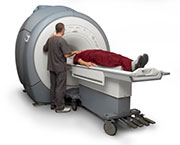Value of incidental diagnoses unclear
TUESDAY, May 26, 2015 (HealthDay News) — For patients with suspected pulmonary embolism (PE), computed tomography (CT) pulmonary angiography is superior to chest radiography for providing a diagnosis, even when no PE is present; however, in patients at low risk, the clinical benefit is questionable, according to a study published in the May issue of the Annals of the American Thoracic Society.
Apostolos Perelas, M.D., from the Einstein Medical Center in Philadelphia, and colleagues conducted a study involving 641 records from adult patients evaluated with CT angiography. The authors reviewed chest radiographs and CT angiography reports to examine whether they could diagnose patients with and without PE.
The researchers found that CT angiography identified a diagnosis in 22.46 percent of the patient population and in 14.31 percent of those without PE. For patients who underwent CT angiography and chest radiography, diagnoses were provided by CT angiography in 14.01 percent of cases and radiography in 9.86 percent of cases. Among patients with low probability for PE, CT angiography and chest radiography provided a diagnosis in 20 and 10.23 percent of cases, respectively. Most missed cases represented infiltrates too small to be identified by radiography.
“CT angiography is superior to chest radiography at providing a diagnosis in patients investigated for PE, even when no PE is present,” the authors write. “However, in patients at low risk for PE, the clinical benefit of the additional diagnoses is questionable.”
Full Text (subscription or payment may be required)
Copyright © 2015 HealthDay. All rights reserved.








